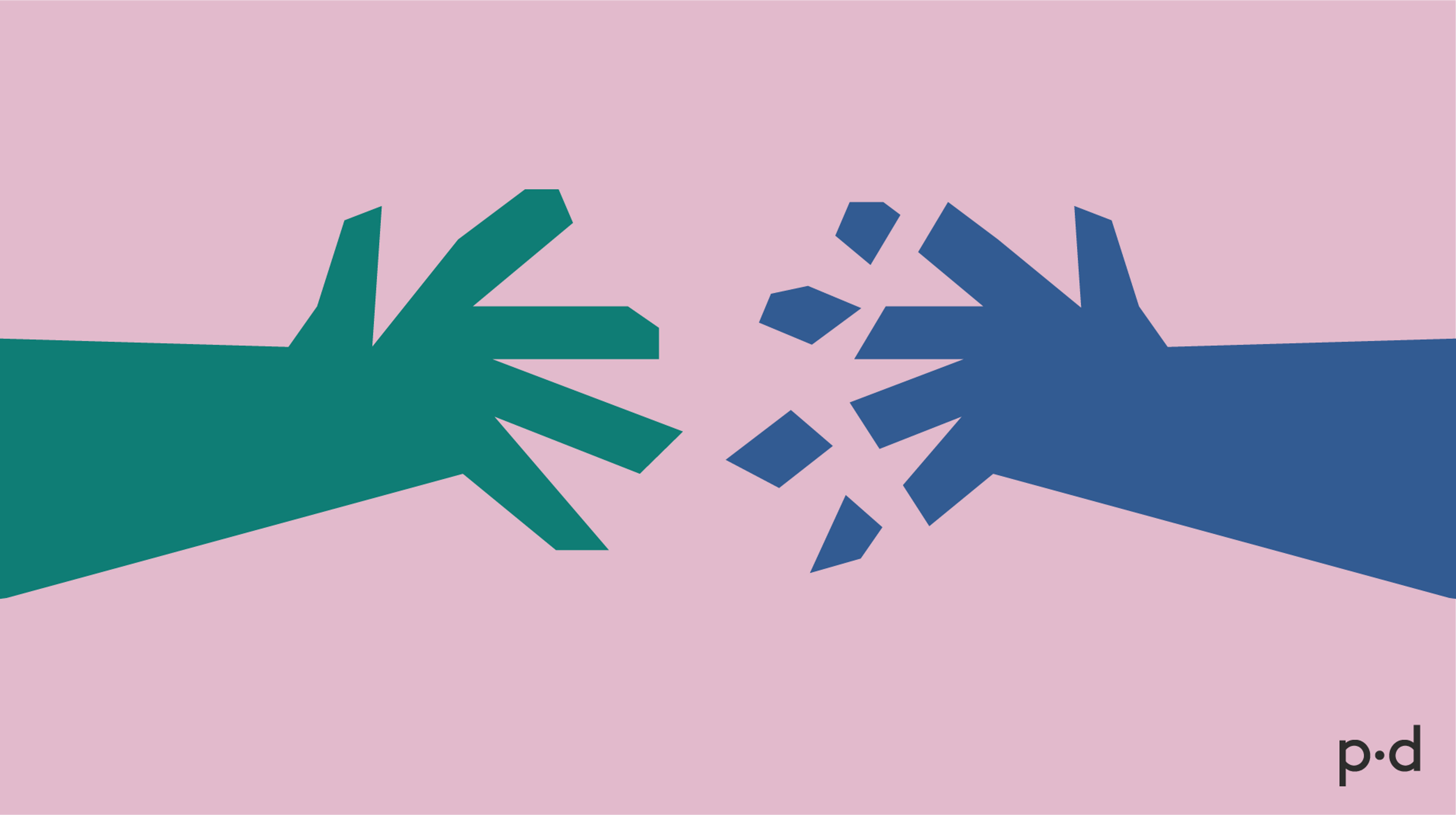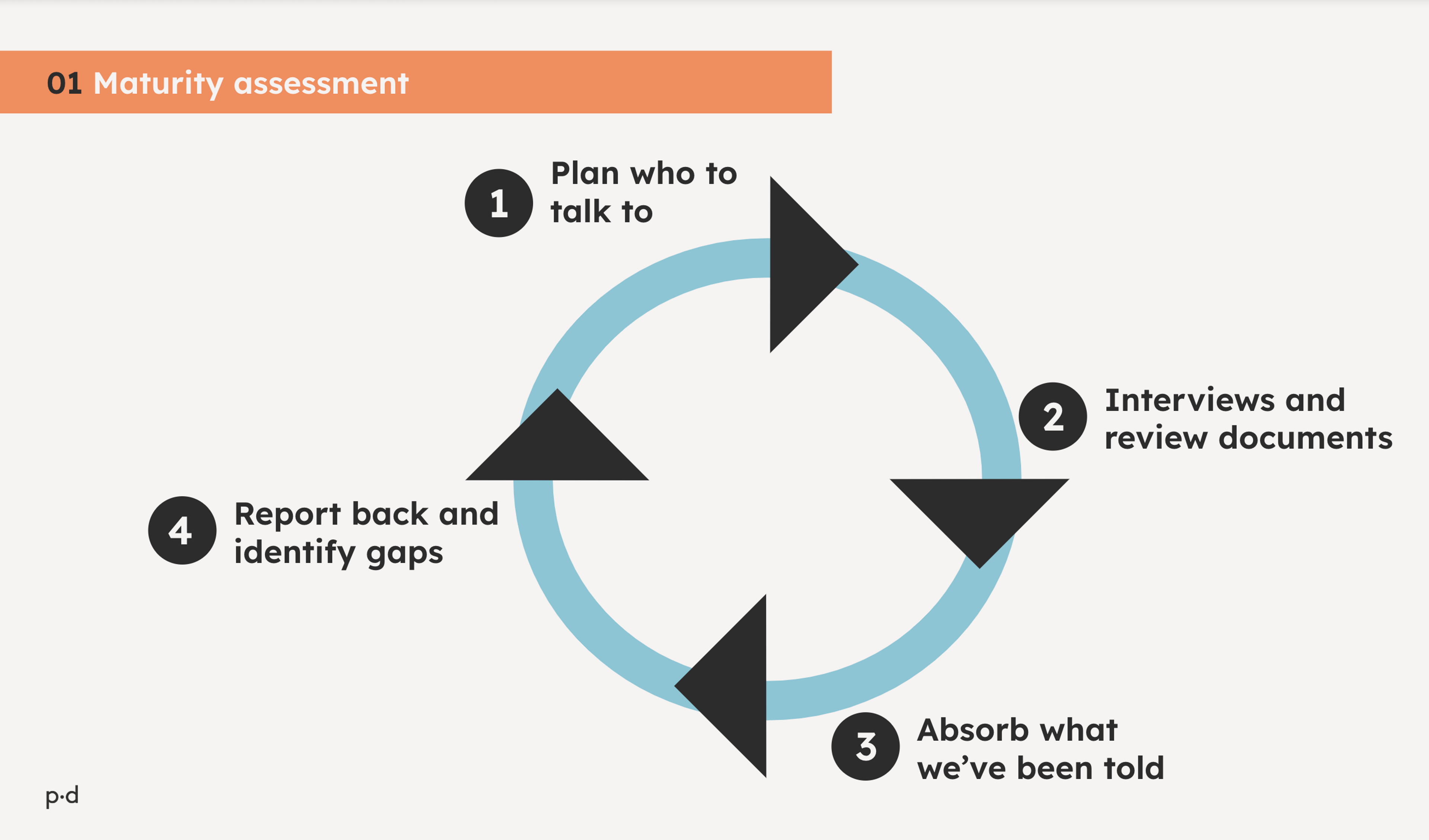
The hidden value of digital maturity assessments

Digital maturity assessments are often seen as a way to measure an organisation’s progress in digital transformation. But their real value isn’t just in assigning a score, it’s in revealing the hidden dynamics that shape an organisation’s ability to deliver better services.
Many organisations undertake digital maturity assessments expecting a straightforward evaluation of their technology, processes and capabilities. What they often discover instead is a reflection of their culture, decision-making and internal alignment – or lack of it. The assessment becomes less about ‘how digital’ they are and more about how well they work together to deliver high-quality services and products for people.
What organisations learn beyond the scores: silos and misalignment
One of the most common, and valuable, insights that emerge from digital maturity assessments is the existence of silos. Teams often have different understandings of what ‘digital’ means or they work with separate tools on their own projects (or parts of a service). Often, they follow processes that don’t align. When the assessment reveals these gaps, it forces important conversations:
Is the vision understood and shared by everyone? Can teams verbalise it?
Who has a view of the end-to-end service and understands its outcomes?
Are teams duplicating efforts because of a lack of coordination?
How does leadership support (or block) cross-functional collaboration?
You can't change what you don't know
Many organisations struggle to move forward because they don’t fully understand what is holding them back. Legacy technology, vendor lock-in and outdated processes often create invisible barriers to progress. What once worked well can now limit agility, making it difficult to adapt to forever-changing circumstances. More than just a technical issue, these constraints reflect deeper organisational habits and mindsets. Digital maturity assessments help surface these roadblocks, providing a way to identify the real inhibitors of change and rethink how digital ways of working can be embedded across the organisation.
This is where digital maturity assessments provide real value, not just by identifying these roadblocks, but by creating an opportunity to pause and reflect. Taking time to step back and review progress allows organisations to reassess their vision, redefine priorities and adjust their approach. It’s never too early, or too late. Making space for open conversations where everyone can speak freely fosters alignment and ensures that digital efforts remain focused on meaningful outcomes. This practice of deliberate reflection helps organisations stay adaptable and responsive to change.

Culture as a barrier or enabler
Digital transformation isn’t just about technology – it’s about people. A maturity assessment often exposes cultural barriers that organisations weren’t fully aware of. These could be:
A fear of change or risk-taking that prevents innovation.
Resistance to iterative development and agile ways of working.
A lack of trust and transparency, horizontally or vertically, that kills collaboration.
A focus on internal priorities rather than truly being user-centred.
Many organisations believe they are delivering user-centred services but in reality they are merely operating in a way that prioritises existing internal structures and processes and legacy ways of working. They may be designing services based on what works best for the organisation rather than what users actually need. True digital maturity requires shifting this mindset, valuing the process of delivering with, for and to users, rather than just expecting them to adapt to existing systems.
Identifying these cultural challenges is critical because no amount of technology investment can compensate for an organisation that isn’t ready to embrace change.
Turning insights into action
A digital maturity assessment shouldn’t be a one-time and isolated exercise, it should be a catalyst for action. The real value comes when organisations use the insights to:
Prioritise areas for improvement based on impact.
Strengthen leadership and governance structures to support digital initiatives.
Foster a culture of continuous learning and iteration.
You can’t ‘buy’ digital transformation without being willing to get into the weeds of your organisation. Digital maturity assessments are about understanding where you are, where you need to go and what’s getting in the way. By looking beyond the scores and embracing the hidden lessons they reveal, organisations can make smarter decisions that lead to better services and products for people.
At Public Digital, we’ve conducted digital maturity assessments* with clients across different sectors. Time and time again, we’ve seen those 'aha' moments, when an organisation suddenly recognises the real barriers to progress. Even when the truths are difficult to digest, these assessments have led to major wins in building consensus, aligning teams and setting a clear path forward. Understanding where you stand is the first step toward making meaningful, lasting improvements.
Have you undergone a digital maturity assessment? What unexpected lessons did you learn? Let’s continue the conversation, below.
*Public Digital’s digital maturity assessments are based on the framework developed in collaboration with Harvard Kennedy School (HKS), which provides a structured approach to evaluating digital capabilities. This model helps organisations identify not only their technical gaps but also the cultural and strategic shifts needed to become truly digital.
Written by

Angeles Kenny
Director
